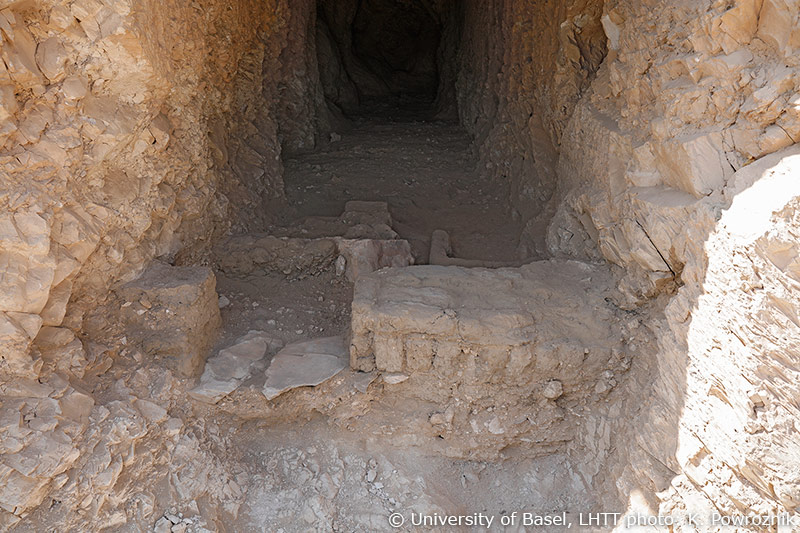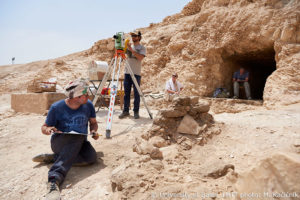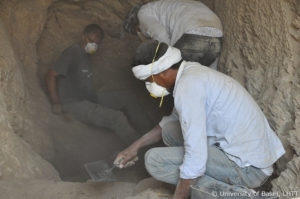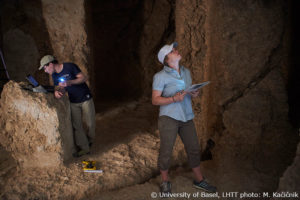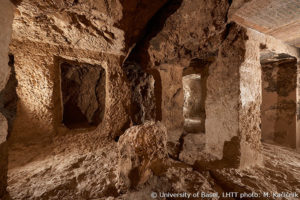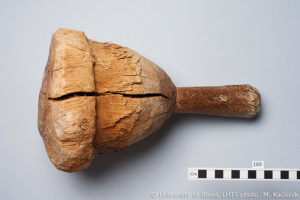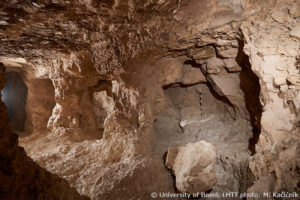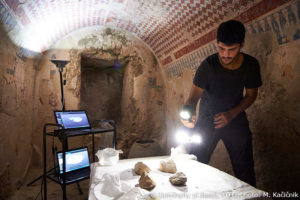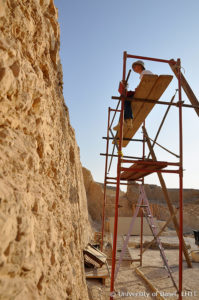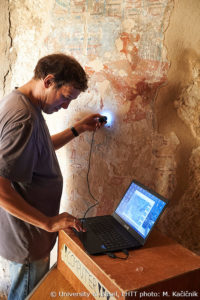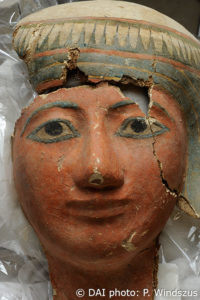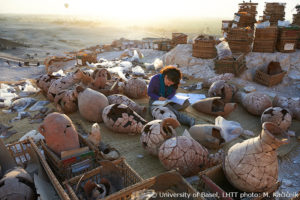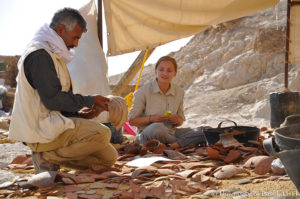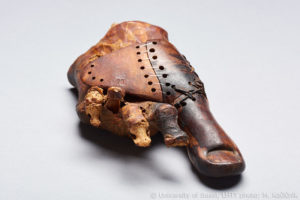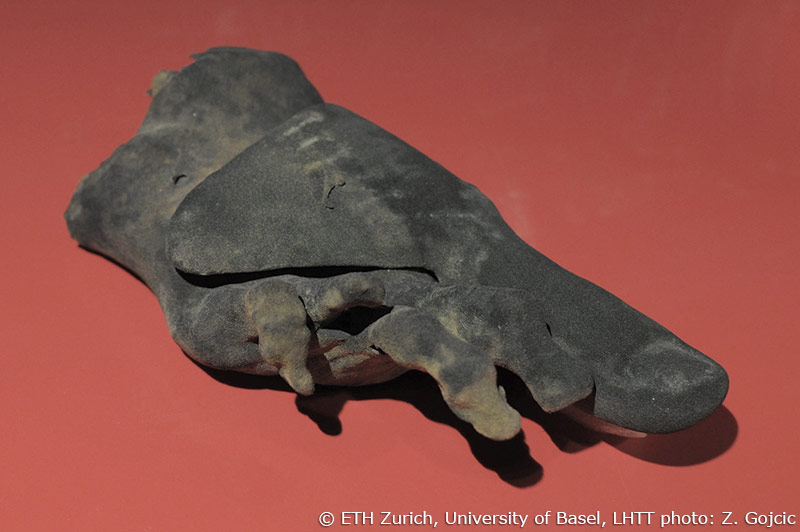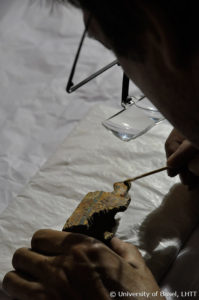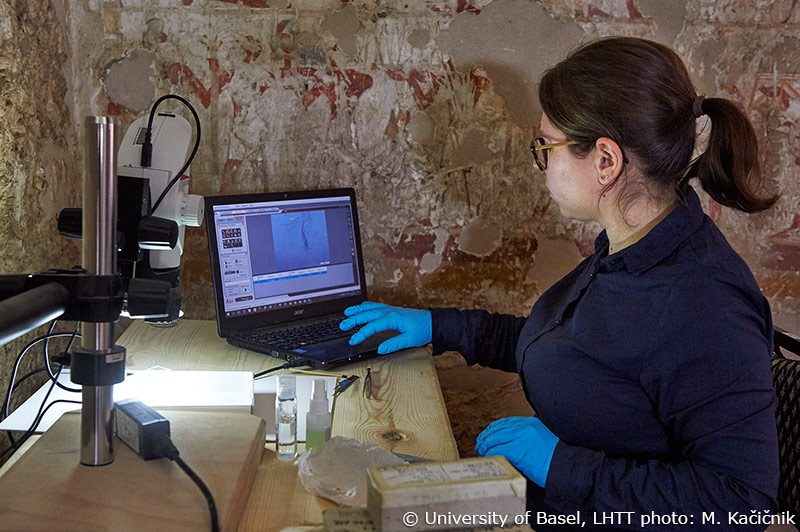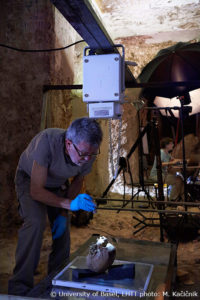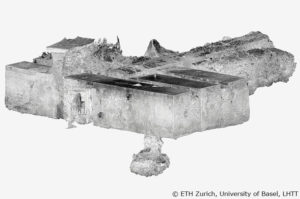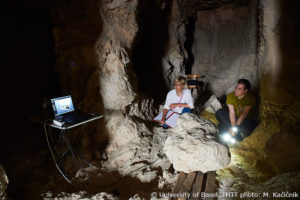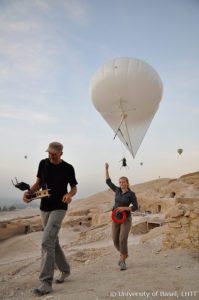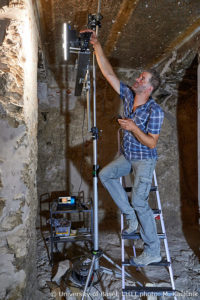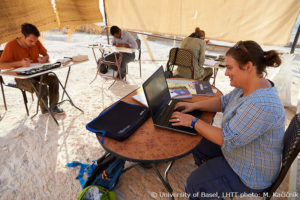Inhalte
Research Areas
Research areas within the LHTT project:
- Landscape Archaeology
- Geological Investigations
- Construction Analysis
- Analysis of Tomb Decoration
- Burial & Domestic Archaeology
- Anthropology
- Geodetic and Photogrammetric Developments
- Relational Database System
Landscape Archaeology
During the past year, geodetic and photogrammetric surveys of the entire archaeological site, including the tombs and their natural and built surroundings, were conducted and completed. Based on the collected 3D laser scans and both terrestrial and aerial photographs, 3D models displaying both the geo- and manmade morphology of the hillside were processed and are used in the project as archaeological and geological base maps. A 3D landscape model including the underground parts of the tombs under investigation is in preparation. On the basis of GPS coordinates, individual tomb and landscape models and maps could be geo-referenced.
The unfinished rock-cut corridor tomb K85 above TT95 was excavated and its use phases documented. The hillside above the tomb has been surveyed and archaeological find spots recorded.
We also started excavations on the large anthropogenic debris cone (AU1000) covering tomb K555. Smaller heaps of limestone debris on top of AU1000 were investigated, recorded and dismounted. The assumption that most of these debris deposits were excavation spoil dumped by late 20th century archaeologists was corroborated by the find material recovered from there. Below these layers and west of K453, ancient debris apparently produced during the construction of TT88 have been reached. The removal of this massive dump will not only grant access to possibly well preserved use layers of the past in and around the forecourt of K555, it will also substantially contribute to a sustainable site management of Sheikh ‘Abd el-Qurna: the recovery of the hillside’s morphology before archaeological activities were begun on a larger scale, and to the extrication and protection of the monuments buried below the debris.
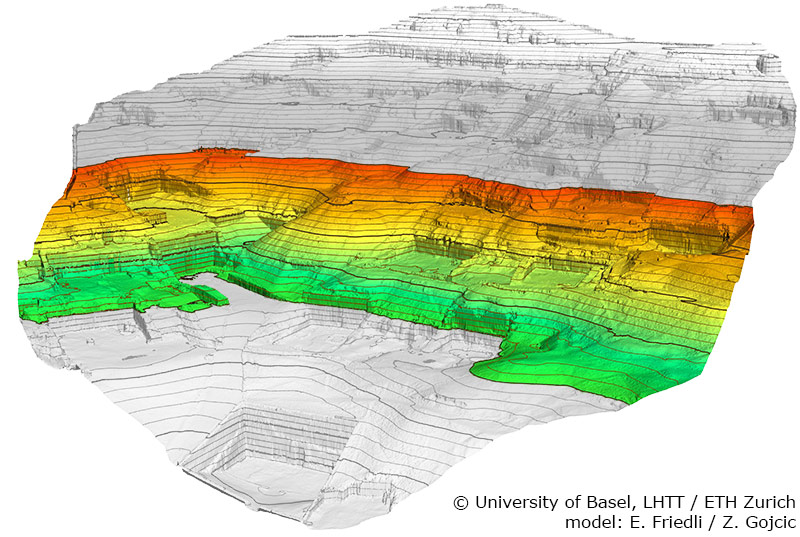
Digital 3D elevation model of the archaeological site. The colored region represents the height level of the excavation area.
Geological Investigations
During the past three seasons, the Geology group investigated tomb pillar stability and tomb failure mechanisms in the project’s tombs and at a wider range at Sheikh ‘Abd el-Qurna. Lithological boundaries, faults, and tension cracks were studied and recorded with respect to tomb locations along two transects at southwest Sheikh ‘Abd el-Qurna, including TT95, K453, TT84, and K90. A detailed geological map was developed, reflecting rock strength and rock mass quality ratings, lithological assessments, and sedimentological analysis of rock samples. Geo-referenced photogrammetric 3D models of tomb façades and walls were created in order to analyze rock mass fracture properties. Also, bedding and fault characterizations were conducted in and around 21 18th Dynasty tombs at Sheikh ‘Abd el-Qurna for comparative analysis. Tomb failure mechanisms and their time factor were studied in detail in TT95A and in comparable pillared tombs at Sheikh ‘Abd el-Qurna.
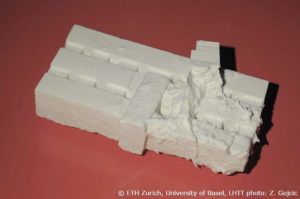
3D print of the 1st pillared hall in 95A, visualizing the extent of the branching tension crack cutting through the south part of the hall
Construction Analysis
A detailed construction analysis with focus on overbreaks and repairs was conducted in TT95A and in the partly collapsed tombs TT93 and TT71. In addition, construction and restoration features related to rock mass instabilities were investigated in 19 more mostly unfinished 18th Dynasty tombs (see also a presentation by Dr. Loprieno-Gnirs on structural damages in Theban tombs in Sheikh ‘Abd el-Qurna). Architectural 3D laser scan models of the tombs studied in the project allow for a precise analysis of degrees of completion, damage areas, and geological discontinuities. A Otoy Octane/Blender photorealistic rendering of its entrance hall developed by ETH geodesy students has gone online ( Students’ blog, video below). Also thousands of photos have been taken from its inner halls to create an imagery model providing high visual accuracy for the study of stone-cutting techniques and sequences.
Another major research focus is variation in rock tomb construction triggered by natural factors or human choices. Changes of plans and their possible causes could be deduced from constructional evidence in complexes TT95A-C and TT84-K453.
Diagnostic tool mark areas have been studied, mapped, identified and recorded, also by using a 3D photo hand scanner. Based on the geometry of metal tool marks on rock faces in TT84 and of real tools hosted in museums, we started to identify the chisels used by the ancient stonemasons at work in the studied tombs. Three intact wooden mallets from the ancient construction deposits in TT95 were examined and recorded. For comparative analysis, two surveyor’s mallets of an 18th Dynasty date have been examined and recorded in the Cairo Egyptian Museum.
Analysis of Tomb Decoration
In TT95A, high-resolution photos were taken of well-preserved painted pillar faces to create photogrammetric models, on the basis of which material and visual aspects of polychrome hieroglyphic inscriptions are now being studied on a micro-analytic level. The vectorization of facsimile pencil drawings from previous epigraphic activities in TT95A has been started; these illustrations are an efficient tool for stratigraphic analyses of tomb painting practices, preservation assessments, and for epigraphic studies. Material as well as epigraphical and philological studies have been initiated in TT84, focusing on the biographical compositions in the tomb.
Burial & Domestic Archaeology
Archaeological investigation focused on the re-assemblage of heavily looted burial groups from previous excavations in TT95, the date of their deposition ranging from the 15th century BC into the late 1st millennium BC, and on the study of later, domestic use phases, during the 6th-9th and the late 19th to the mid-20th century. The most significant material groups recovered during excavation are pottery sets and human remains from the burial chambers in 95A-C, as they have survived looting in more substantial quantities. The second most relevant group consists of remains of mostly painted body envelopes made of wood or cartonnages.
For substructure 95B, the full chronological sequence of uses of pottery could be established. In its corridor complex, pottery used for interments were mixed with pottery from Late Roman (Coptic) and 19th-20th century occupation. A considerable number of Late Roman amphorae could be reassembled from deposits in the corridor, which therefore must have served as a storage room or cellar. An important pottery group from 18th Dynasty burial assemblages, equally from 95B, are big jars once containing wasted embalming materials (more than 30 vessels and some Nile silt jar stoppers).
Pottery groups of the 1st millennium BC from the corridor burial system in 95B display a high variation of pottery types and provide new insights into funerary provisioning during this period. A large group can probably be identified as embalming jars of the 22nd Dynasty and the 25th Dynasty; they were deposited together with a high number of incense burners, small dishes and some “miniature” vessels.
Particular attention was paid to the archaeological evaluation of a much disturbed female burial (“Lady with an Artificial Toe”) dating to the Third Intermediate Period or Late Period. The remains of this interment retrieved from the fillings of the 95A shaft tomb provided the in situ finding of a wooden toe prosthesis attached to the right foot of the disjointed mummy.[1] With respect to its historical significance (one of the oldest prosthetic devices with archaeological record), we have started to study and record all surviving burial items from this find location, including a magic papyrus amulet. The prosthesis, the foot, and the inscribed linen pieces were re-examined and recorded during an interdisciplinary study visit at the Egyptian Museum at Cairo.
Also, detailed analytical studies have been started of coffin and furniture fragments, textiles, and plant materials from burial assemblages of different use phases at TT95.
[1] A. Nerlich, A. Zink, U. Szeimies, H. Hagedorn, Ancient Egyptian prosthesis of the big toe, in: The Lancet 356, 2000, pp. 2176-2179.
Anthropology
During the fall season 2016, all human remains from TT95A and 95B have been re-examined, catalogued, and photographed. A portable X-ray generator was used to determine their sex and age and to diagnose pathologies (output: 301 conventional X-rays, 30 dental X-rays). The collected data were inserted into a database (Anthropotective) and are the basis for further analyses. At this stage of research, a minimal number of 38 individuals could be determined for 95A, 25 for 95B (5 were without precise location). Among the pathological changes mainly skeletal stress markers, dental diseases, and a healed bone trauma could be detected.
Geodetic and Photogrammetric Developments
The processing of large amounts of data from 3D laser scans recorded during three field seasons (671 scans) resulted in a precise digital elevation model covering an area of about 23’000 m2 and in a number of 3D architectural models of the project tombs. We are also currently exploring methods of classifying and recognizing morphologic similarities between objects within point clouds, related to tool mark analyses in the tombs and the identification of the original location of rock blocks extracted by the ancient stoneworkers from the bedrock.
Photogrammetric procedures have constantly been tested and developed for archaeological and construction analyses. Scaled 3D models of archaeological horizons in tomb K85 have been processed and will be implemented into the 3D laser scan model of the tomb to visualize the stratigraphy of its filling and installation levels. During this year, the photogrammetry of the painted tomb walls and unfinished rock faces, floors, and ceilings has been refined and applied in TT95(A) and partially in TT84. For material and visual investigations of tomb paintings on a micro-level, a camera tripod supplied with runners and a lighting system has been developed to guarantee high-resolution photogrammetry of selected wall painting areas in 95A under identical conditions to qualify for comparative studies.
Relational Database System
A sustainable archaeological database concept was developed and implemented into the database software antiqua pro by Joanneum Research (Graz, Austria). Both database structure and interface design are constantly adjusted to the needs of its scientific users. On the archaeological site and in the excavation house, an internal database network was established to use antiqua pro offline. Up to date, the database encompasses about 5300 archaeological entries and more than 8500 referenced media objects based on old and recent excavation records.


